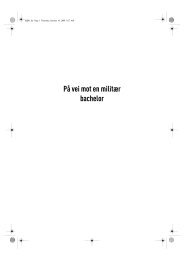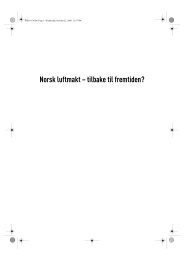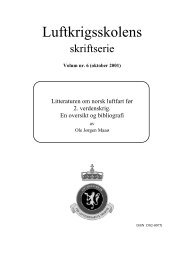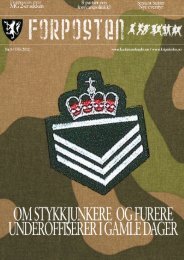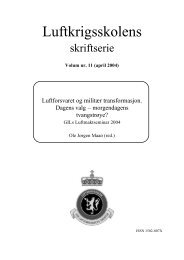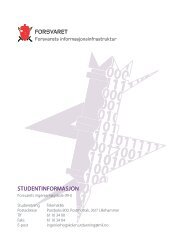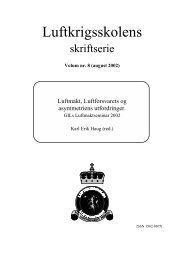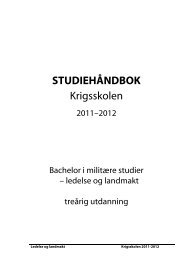Wilhelm Mohr
Wilhelm Mohr
Wilhelm Mohr
Create successful ePaper yourself
Turn your PDF publications into a flip-book with our unique Google optimized e-Paper software.
PART II –The Ground Crews’ Participation<br />
War<br />
the Continent<br />
1944/45<br />
The Air Force’s participation in the fighting on the Continent 1944/45<br />
132 (N) Wing consisting of fighter Squadrons 331 (N) and 332 (N),<br />
had found its place and rhythm at the North Weald airbase just northeast<br />
of London. This base had become a home for the personnel, and<br />
they thrived there. Within the British Air Force [RAF] and the Fighter<br />
Command to whom they belonged for their operational efforts,<br />
the squadrons were renowned for the professional standards of their<br />
technical personnel, and their ability to adjust and show initiative. The<br />
Norwegian authorities therefore considered it an honour when the<br />
British Air Force [RAF] wanted the Norwegian squadrons as participants<br />
during the invasion. However, there were a number of issues to<br />
take into consideration, partly due to the established military agreement<br />
with regard to Norwegian military efforts outside Norway. In<br />
Article One of the Agreement, it is stated: ’The Norwegian forces …<br />
shall be used either to defend the United Kingdom or to re-conquer<br />
Norway’. Another consideration was of a somewhat more practical and<br />
pressing nature. In order to maintain the squadrons’ fighting ability<br />
as far as pilots were concerned, there was the question of whether the<br />
Norwegians would be able to replace their personnel in accordance<br />
with what allied calculations deemed necessary. For pilots, the British<br />
Air Force [RAF] anticipated significantly higher losses than operations<br />
thus far had caused. Yet also with regard to the ground crews, losses<br />
had to be faced, and due to the insecurity of war such losses might have<br />
resulted in a sudden and drastic reduction of the force. For this reason,<br />
it was decided to drop the planned third Norwegian fighter squadron.<br />
This was unfortunate, but the Government’s decision to allow the Norwegian<br />
Wing to participate in the invasion was met with enthusiasm<br />
and anticipation by the personnel.<br />
For the two Squadrons, still at North Weald, it became a very busy<br />
period. The air operations continued and amounted primarily to participation<br />
in the collective air offensive aimed at destroying the German<br />
Air Force [Luftwaffe]. However, at the same time, the Squadrons<br />
81



